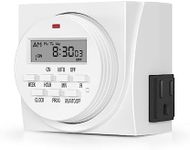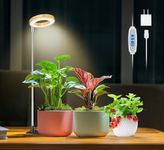Buying Guide for the Best Timer For Grow Lights
Choosing the right timer for your grow lights is important for automating your plant care routine and ensuring your plants get the right amount of light each day. A timer helps you control when your grow lights turn on and off, which is essential for healthy plant growth, especially if you can't always be there to do it manually. When picking a timer, you'll want to consider how easy it is to use, how flexible the scheduling options are, and whether it can handle the power needs of your grow lights. Understanding the key features will help you find a timer that fits your setup and makes your plant care much easier.Type of Timer (Mechanical vs. Digital)The type of timer refers to how the timer operates and how you set it up. Mechanical timers use a dial and pins to set on/off times, while digital timers use buttons and a digital display. Mechanical timers are simple and reliable, great for basic on/off schedules, but they usually offer less flexibility. Digital timers can offer more precise scheduling, multiple on/off cycles per day, and sometimes even weekly programming. If you just need your lights to turn on and off at the same time every day, a mechanical timer is often enough. If you want more control, like different schedules on different days, a digital timer is a better choice.
Number of OutletsThis spec tells you how many devices you can plug into the timer at once. Some timers have just one outlet, while others have several. If you have only one grow light, a single outlet is fine. If you want to control multiple lights or other equipment (like fans), look for a timer with more outlets. Make sure the total power of all devices plugged in does not exceed the timer's maximum rating.
Load Capacity (Wattage/Amperage)Load capacity is about how much electrical power the timer can safely handle. It's usually listed in watts (W) or amps (A). This is important because if your grow lights use more power than the timer can handle, it could be unsafe. To pick the right one, check the wattage or amperage of your grow lights and make sure the timer's rating is equal to or higher than that number. For small LED lights, most timers will work, but for larger or multiple lights, double-check the specs.
Programming OptionsProgramming options refer to how flexible the timer is in setting on/off times. Some timers only allow one on and one off time per day, while others let you set multiple cycles or different schedules for different days. If your plants need a simple, consistent light schedule, basic programming is enough. If you want to mimic natural light patterns or have different routines on weekends, look for a timer with more advanced programming.
Backup BatteryA backup battery keeps the timer's settings saved if the power goes out. This is especially useful for digital timers, which can lose their programming during outages. If you live in an area with frequent power interruptions or want to avoid resetting your timer, choose one with a backup battery feature.
Ease of UseEase of use is about how simple it is to set up and operate the timer. Some timers have clear instructions and intuitive controls, while others can be confusing. If you prefer a straightforward setup, look for timers with simple dials or clear digital displays. If you enjoy tinkering and want more features, a more complex timer might be fine for you.
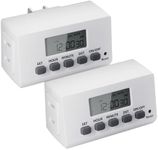
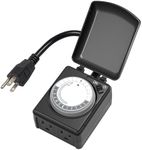
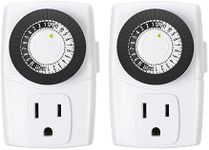







![FosPower Timer Outlet [ETL Listed] 125V/15A LCD Digital Indoor Outlet Timer, 7 Day Programmable Timer with 2 AC Plug Capacity for Lights, Lamps, Fans & Electrical Outlets (2 Pack)](https://images-proxy.bestreviews.guide/9e8vS1ZbCqaeqFC19Q-4T0z134U=/0x150/https://m.media-amazon.com/images/I/51HHpRMtTaL._AC_CX679_.jpg)

